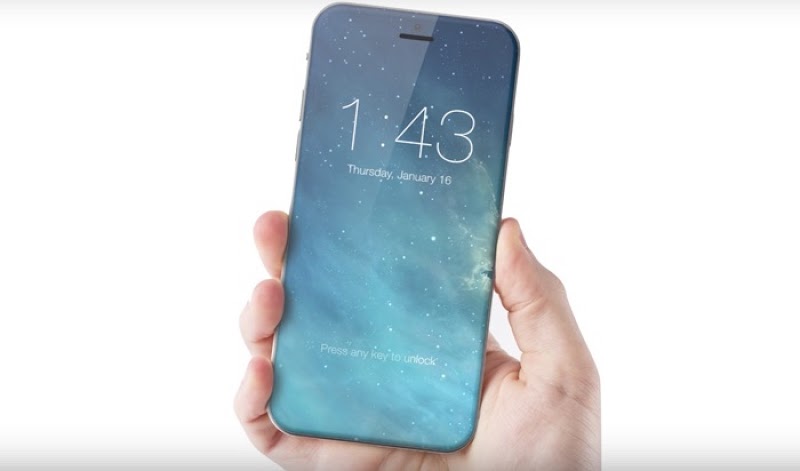Apple iPhone 8 & iPhone 8 Plus
Apple has a major iPhone redesign planned for 2017, with a glass body and edge-to-edge OLED display that includes an integrated Touch ID fingerprint sensor and front-facing camera. The new iPhone may be sold alongside upgraded (but standard) 4.7 and 5.5-inch iPhones.
 |
| iPhone concept image via ConceptsiPhone |
- 5.8" OLED display
- Faster A11 processor
- Glass body
- Edge-to-edge display
- Camera and Touch ID integrated in display
- No Home button
- Wireless charging
- Three models - One OLED, two standard
Samsung Galaxy S8
The display scaling options we've seen on the Galaxy S7 with the Nougat update will be carried over to the Galaxy S8, albeit with a few changes to accommodate the tall display.
A new leaked image shows off the resolution settings for the Galaxy S8, which will also have three options: HD+ (1480x720), FHD+ (2220x1080), and QHD+ (2960x1440). The last option is the native resolution of the Galaxy S8, and similar to the LG G6, the extra-tall panel sports an 18.5:9 ratio.
Alongside the display options, we've got a leak that shows off the retail box of a Verizon-branded Galaxy S8 Plus. The box reveals that the phone will offer 64GB storage,
Samsung Foldable smaprtphone
This may also be the year that Samsung releases a foldable smartphone, a design it has been developing for years. As this 2013 Samsung concept video shows, such a device would let you read and view content on a tablet-sized screen that could convert to a smartphone-like size for convenient transport. Other companies, including Lenovo, the Chinese phone maker Oppo, and the Japanese display maker JDI have also created dual-screen and foldable smartphones, but none have been released commercially. Samsung hopes to beat them to market.
Microsoft Surface phone
CEO Satya Nadella has said Microsoft is working on the “ultimate mobile device.” What might that be? Its Surface series of laptops, PCs, and tablets is missing a phone, but one is expected to launch in 2017. You can expect it to have a metal body to match Microsoft’s other Surface devices and run the Windows 10 operating system through an emulator when connected to an external keyboard, monitor, and mouse.
HTC Vive 2 VR headset
A year ago, HTC’s pivot from making smartphones to focusing on virtual-reality technology seemed risky, but its Vive VR system has gained a solid following since its April 2016 release. For its follow-up device, HTC is expected to cut the cable that currently tethers the headset to its user’s PC. Startups have created accessories that let the headset be used wirelessly, and HTC is expected to offer a more integrated solution in the Vive 2.
Android Wear 2.0 smart watches
There are loads of new features coming in Android Wear 2.0, so here are some of the most important changes.
There are loads of new features coming in Android Wear 2.0, so here are some of the most important changes.
Google Assistant: First seen in Google's Pixel smartphones, Google Assistant is coming to Android Wear 2.0. This means the intelligent helper is now on your wrist and ready to respond to an 'Ok Google' command or a hold of the power button. Assistant will be available in English and German at launch, and other languages in coming months.
Assistant can make reservations for you, or give you a weather report. Assistant will also work with certain smart home devices, so you can tell it to turn the lights on in your home – complete hands-free.
Complications: One of the biggest arrivals in Android Wear 2.0 is the addition of complications, a feature already available on the Apple Watch 2. These are coming to the always-on display, too, meaning permanent at-a-glance updates from your favourite apps.







